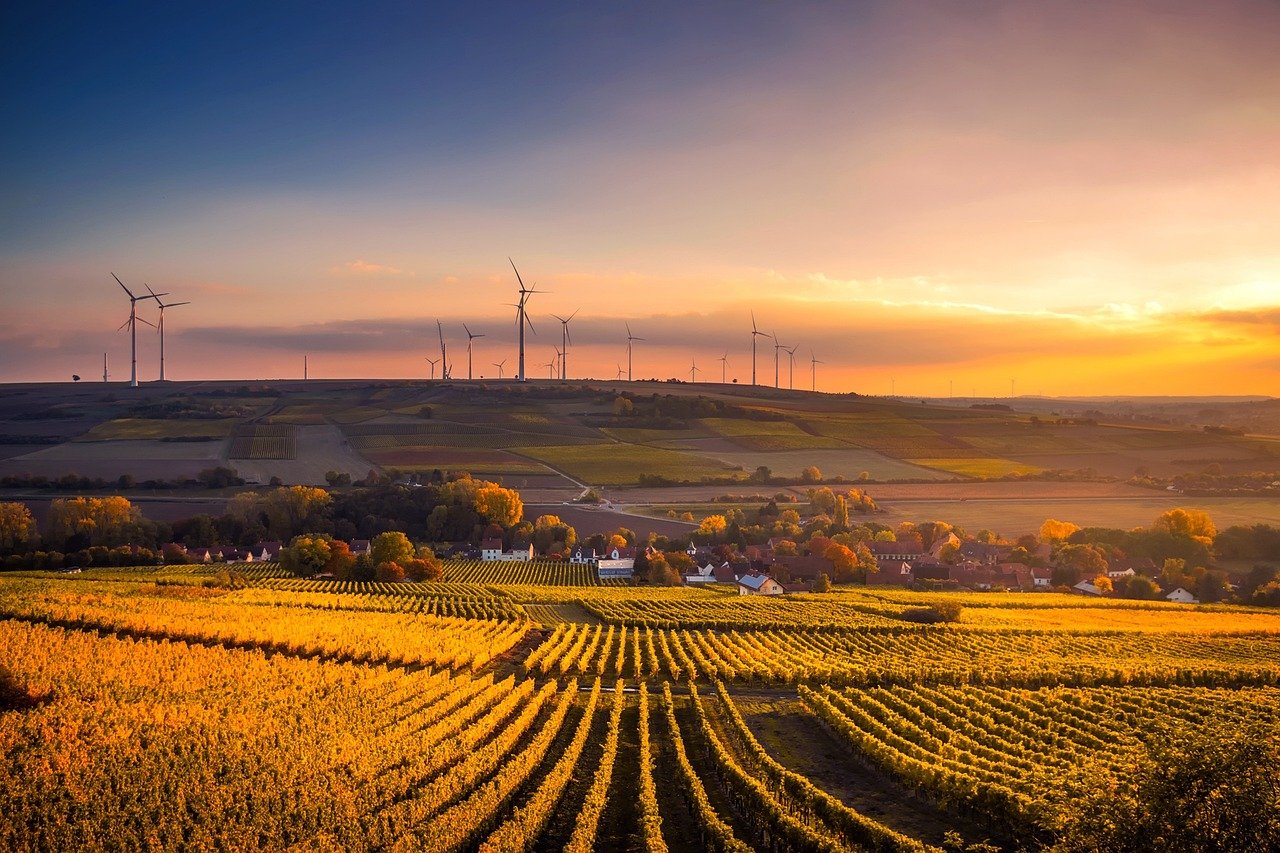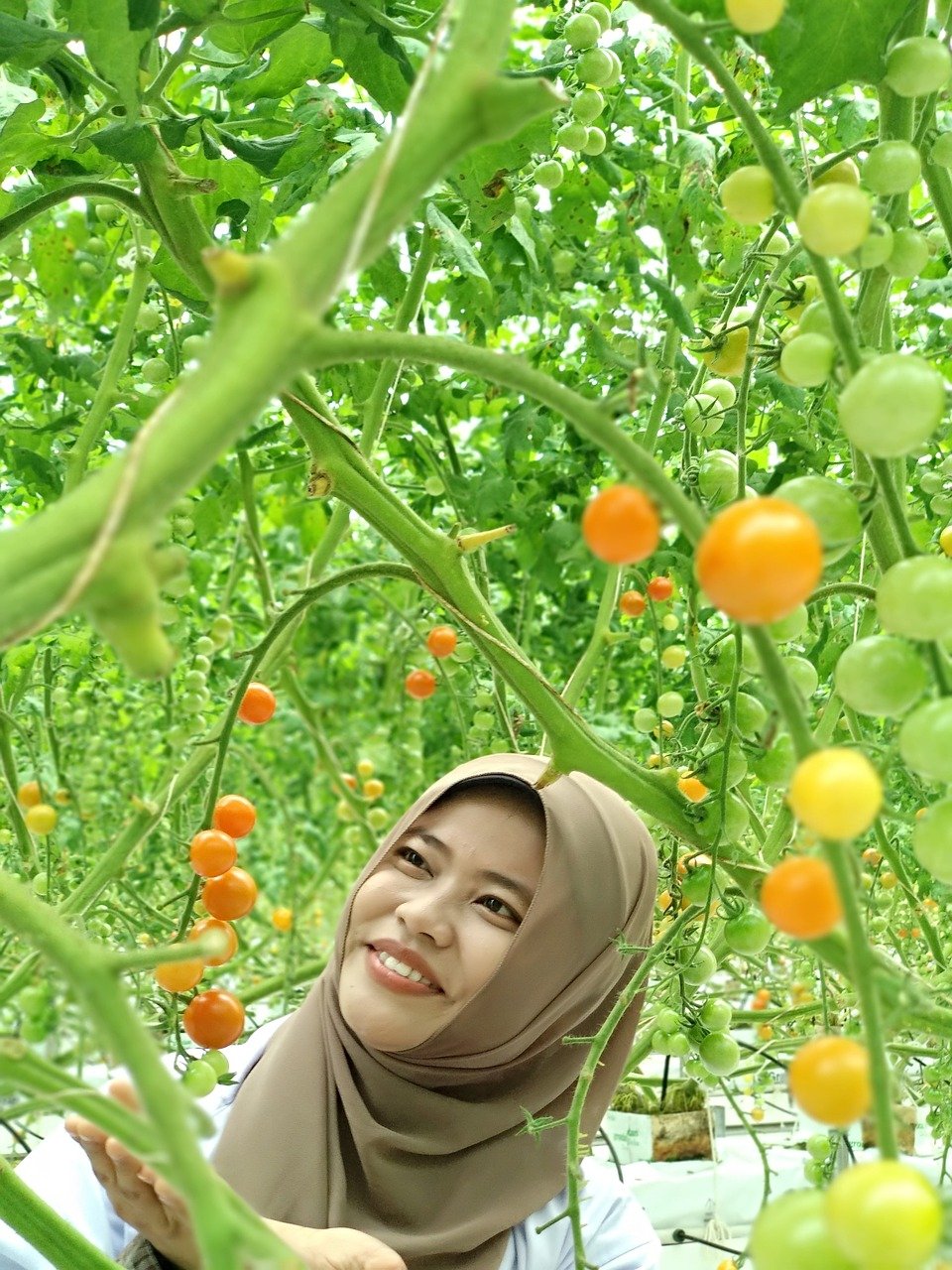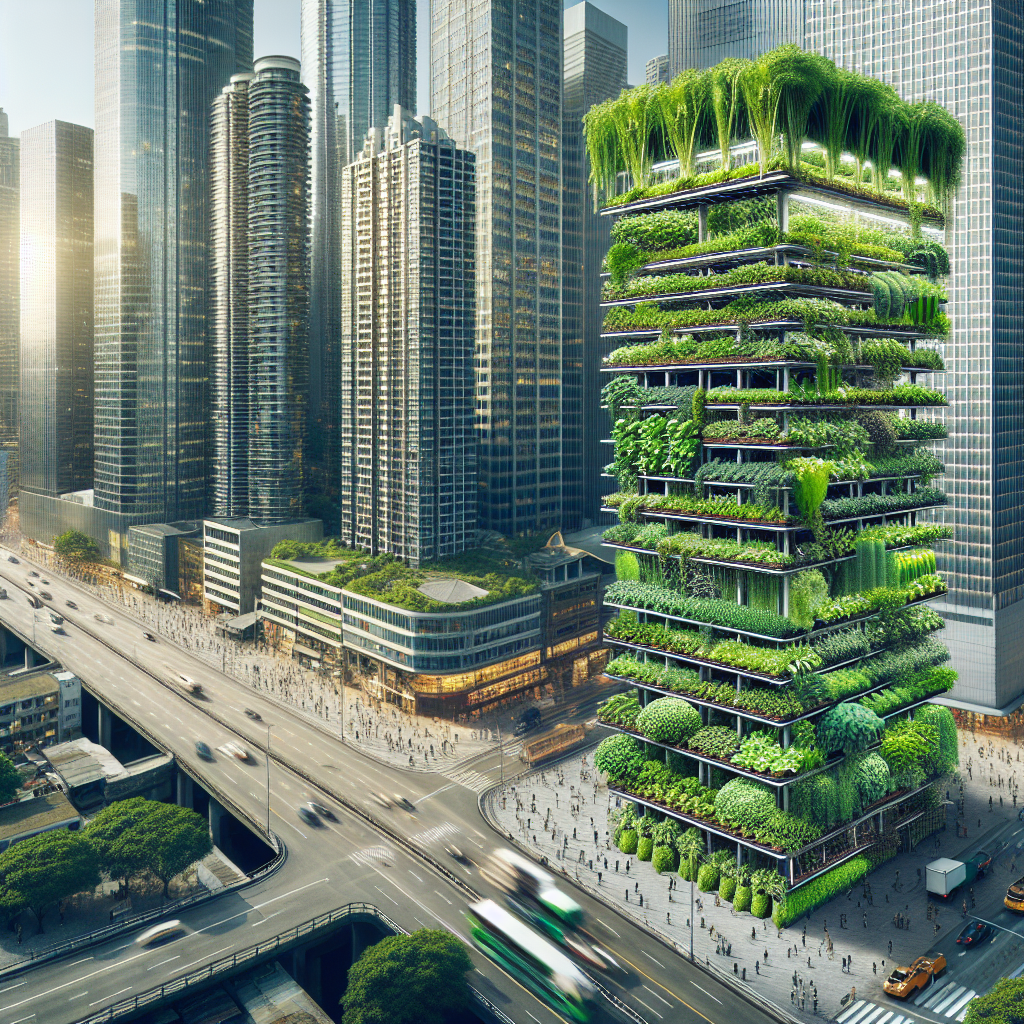
Are you curious about the potential of urban farming in combating the scorching temperatures of urban heat islands? This article delves into the impact of urban farming on mitigating these heat islands. As cities continue to grow, the concrete jungle expands, trapping heat and raising temperatures to uncomfortable levels. But with the emerging trend of urban farming, we may have found a solution that not only brings nature back into the city but also helps to cool down these urban hotspots. Let’s explore how urban farming plays a crucial role in mitigating the effects of urban heat islands.

Understanding Urban Heat Islands
Definition of urban heat islands
Urban heat islands refer to the phenomenon where urban areas experience higher temperatures compared to the surrounding rural areas. This increase in temperature is primarily caused by human activities, such as the construction of buildings, roads, and infrastructure, which result in changes to the surface characteristics of urban areas.
Causes of urban heat islands
There are several factors that contribute to the formation of urban heat islands. One major factor is the increased absorption and retention of solar energy by built surfaces, such as asphalt and concrete. These materials have high thermal conductivity and heat capacity, causing them to absorb and radiate heat more efficiently than natural surfaces like vegetation or soil.
Another contributing factor is the lack of green spaces and vegetation in urban areas. The removal of trees and vegetation reduces shade and evapotranspiration, which are crucial cooling mechanisms in natural environments. Additionally, the presence of urban infrastructure, such as buildings and roads, creates a heat-trapping effect, known as the urban canyon effect, which further exacerbates the rise in temperatures.
Impacts of urban heat islands on human health and the environment
Urban heat islands have significant impacts on both human health and the environment. High temperatures can lead to heat-related illnesses, such as heat stroke and heat exhaustion, particularly among vulnerable populations such as the elderly and young children. Heat islands can also worsen air quality, as the increased temperatures enhance the formation of air pollutants, such as ozone and particulate matter.
Moreover, urban heat islands can disrupt ecosystems and biodiversity. The elevated temperatures can affect the reproductive cycles of plants and animals, leading to changes in the distribution and abundance of species. Heat islands also contribute to increased energy consumption and greenhouse gas emissions, as the need for air conditioning and cooling systems escalates.
Introduction to Urban Farming
Definition of urban farming
Urban farming, also known as urban agriculture, refers to the practice of cultivating, processing, and distributing food in urban areas, either on small-scale plots of land or using innovative techniques such as hydroponics or vertical farming. It encompasses various forms of agriculture, including rooftop gardens, community gardens, and urban agriculture initiatives.
Types of urban farming practices
Urban farming encompasses a range of practices, each tailored to suit the specific constraints and opportunities of urban environments. Some common types of urban farming include rooftop gardens, where plants are grown on the roofs of buildings, community gardens, which involve the cultivation of shared plots of land by community members, and indoor farming, which utilizes hydroponics or vertical farming systems to optimize space and resource use.
Benefits of urban farming
Urban farming offers numerous benefits for individuals, communities, and the environment. Firstly, it helps to improve food security and access to fresh, healthy produce in urban areas, particularly in neighborhoods with limited access to grocery stores or where fresh produce is prohibitively expensive. By growing food locally, urban farming reduces reliance on long-distance transportation and minimizes food waste.
Additionally, urban farming contributes to the creation of green spaces in densely populated urban areas, improving air quality, and enhancing the overall aesthetics of the cityscape. These green spaces also provide opportunities for community engagement, fostering social cohesion, and promoting environmental awareness. Furthermore, urban farming has the potential to generate economic opportunities and create jobs, particularly in areas with high unemployment rates.

The Relationship between Urban Farming and Urban Heat Islands
Exploring the cooling effect of urban farming
Urban farming has been found to have a significant cooling effect, mitigating the impact of urban heat islands. Plants help to reduce temperatures through the process of evapotranspiration, where water vapor is released into the atmosphere through the leaves of plants. This evaporation cools the surrounding air, creating a local cooling effect.
The role of urban vegetation in mitigating heat islands
Urban farming contributes to increasing the vegetation cover in urban areas, which helps to mitigate the formation of heat islands. Vegetation, such as trees, shrubs, and rooftop gardens, provide shade, reducing heat absorption by buildings and paved surfaces. Furthermore, the leaves of plants can intercept and reflect solar radiation, preventing it from being absorbed by the urban surfaces.
Comparing the differences in temperatures between urban farming areas and non-farming areas
Several studies have shown that urban farming areas experience lower temperatures compared to non-farming areas within the same urban environment. For example, research conducted in cities like New York and Chicago found that neighborhoods with higher green space coverage, including urban farming areas, had significantly lower temperatures during heatwaves compared to areas with a smaller percentage of green spaces.
The impact of green roofs and vertical gardens
Green roofs and vertical gardens, common components of urban farming, have proven to be effective in reducing the urban heat island effect. Green roofs, which involve covering rooftops with vegetation, provide natural insulation, reducing the need for energy consumption for heating and cooling buildings. Vertical gardens, on the other hand, utilize vertical spaces to grow plants, which act as natural air filters, cooling and purifying the air.
Enhancing Urban Farming Strategies for Heat Mitigation
Promoting the use of rooftop gardens
One effective strategy for enhancing urban farming and mitigating heat islands is the promotion of rooftop gardens. Rooftop gardens utilize underutilized spaces in urban areas and help to reduce temperatures by providing shade and cooling through evapotranspiration. Governments and municipalities can incentivize the installation of rooftop gardens through policy measures and financial support.
Utilizing urban agriculture to enhance shade effects
Urban farming practices, such as the cultivation of trees and shrubs, can enhance shade effects and reduce the direct exposure of urban surfaces to solar radiation. By strategically planting trees and vegetation in urban areas, particularly in open spaces and along streets, the cooling effect can be maximized, creating a more comfortable and sustainable urban environment.
Employing water bodies and irrigation systems
Integrating water bodies, such as ponds or fountains, into urban farming areas can provide additional cooling effects. These water bodies can act as evaporative cooling systems, lowering temperatures through the evaporation of water. Additionally, efficient irrigation systems can help conserve water while ensuring plants receive adequate moisture, promoting healthy growth and cooling effects.
Incorporating green infrastructure in urban design
To enhance the impact of urban farming in mitigating heat islands, it is crucial to incorporate green infrastructure into urban design plans. This includes incorporating green spaces, such as parks and gardens, into the urban fabric. Urban planners and architects can also integrate vertical farming systems and green roofs into building designs, creating a harmonious blend of urban development and sustainable agriculture.

Case Studies on Urban Farming’s Impact on Heat Islands
Examining successful urban farming projects
Several successful urban farming projects have demonstrated the positive impact of urban farming in mitigating heat islands. For example, the Brooklyn Grange in New York City, one of the largest rooftop farming ventures, has helped to reduce temperatures on nearby buildings and surrounding areas. Similarly, the Rooftop Republic project in Hong Kong has transformed unused rooftops into thriving urban farms, providing cooling and greening effects.
Analyzing the data and results from urban farming initiatives
Data and results from various urban farming initiatives have confirmed the effectiveness of urban farming in reducing heat island effects. Studies have shown that urban areas with higher green space coverage, including urban farms, experience lower temperatures during heatwaves, and have improved air quality compared to areas with minimal vegetation. These findings highlight the importance of incorporating urban farming in heat mitigation strategies.
Discussing the challenges and limitations faced by urban farming initiatives in heat mitigation
While urban farming has proven to be an effective strategy in mitigating heat islands, there are challenges and limitations that need to be addressed. Limited availability of suitable land for farming, inadequate access to resources and education, and financial constraints are some common challenges faced by urban farming initiatives. Overcoming these barriers requires collaborative efforts between government agencies, community organizations, and urban farmers.
Urban Farming Policies and Support
Government initiatives and policies promoting urban farming
Governments at various levels have recognized the importance of urban farming in heat mitigation and have implemented initiatives and policies to support its growth. These include providing funding for urban farming projects, creating regulations and guidelines for urban agriculture practices, and incorporating urban farming in urban planning policies. Such government support plays a crucial role in encouraging the establishment and expansion of urban farming practices.
Financial incentives for urban farming projects
To incentivize urban farming initiatives, governments and organizations can provide financial support in the form of grants, subsidies, or tax incentives. These financial incentives can help overcome the initial investment costs associated with setting up urban farming infrastructure and can provide ongoing support to farmers in maintaining and expanding their operations.
Collaboration between community organizations and urban farming initiatives
Collaboration between community organizations and urban farming initiatives is essential for ensuring the success and sustainability of urban farming projects. Community organizations can provide support by offering resources, land, and expertise, while urban farming initiatives can contribute to community development and engagement through education, job training, and food distribution programs.
Educational programs and workshops on urban farming
To promote urban farming and increase awareness about its benefits, educational programs and workshops can be conducted. These programs can provide training on urban agriculture techniques, sustainable farming practices, and entrepreneurship in urban farming. In addition, educational institutions can integrate urban farming into their curriculums, equipping students with the knowledge and skills needed to participate in urban agriculture initiatives.

Engaging Communities in Urban Farming for Heat Mitigation
Encouraging community involvement in urban farming
To enhance the impact of urban farming in heat mitigation, it is crucial to encourage community involvement in farming initiatives. This can be achieved through the establishment of community gardens, where community members can collectively participate in food production and cultivation. Involving residents in decision-making processes and empowering them to take ownership of urban farming projects fosters a sense of community pride and promotes long-term sustainability.
Creating awareness about the benefits of urban farming
Raising awareness about the benefits of urban farming is essential to garner support and engagement from community members. This can be done through educational campaigns, workshops, and community events that highlight the environmental, social, and economic advantages of urban farming. Sharing success stories and showcasing the positive impact of urban farming on heat mitigation can inspire individuals and communities to get involved.
Building partnerships and networks among urban farming organizations
By building partnerships and networks among urban farming organizations, knowledge-sharing and resource exchange can be facilitated. Collaboration between different stakeholders, including farmers, researchers, policymakers, and community organizations, can enhance the effectiveness and impact of urban farming in mitigating heat islands. These partnerships can also help address common challenges and explore innovative solutions for urban farming initiatives.
Overcoming social and cultural barriers in urban farming projects
Social and cultural barriers, such as limited access to land, lack of knowledge about farming techniques, and cultural norms, can hinder the implementation of urban farming projects. It is important to address these barriers through community engagement, education, and tailored support programs. Building trust and understanding among diverse communities can help overcome these barriers and promote inclusive and equitable urban farming practices.
Economic and Social Benefits of Urban Farming
Job creation and economic opportunities
Urban farming has the potential to create jobs and generate economic opportunities, particularly in areas with high unemployment rates. From farm laborers to entrepreneurs involved in value-added processing and distribution, urban farming can provide employment across the entire agricultural value chain. Additionally, urban farms can contribute to local economies by selling produce directly to consumers or restaurants, thereby supporting local businesses.
Improving food security and access to fresh produce
One of the key benefits of urban farming is its contribution to improving food security and access to fresh, nutritious produce. By cultivating food locally, urban farming reduces dependence on long-distance transportation, eliminating the need for large-scale storage and refrigeration. This localized production and distribution model ensure that fresh produce is readily available to urban communities, particularly those in food deserts or areas with limited access to grocery stores.
Promoting social cohesion and community engagement
Urban farming projects have been shown to promote social cohesion and community engagement. Community gardens and urban farms serve as gathering spaces, bringing people from diverse backgrounds together, fostering social interactions, and strengthening community bonds. By working together towards a common goal, individuals and communities develop a shared sense of purpose, contributing to the overall well-being and resilience of the community.
Enhancing urban aesthetics and quality of life
Urban farming contributes to the enhancement of urban aesthetics, transforming underutilized spaces such as vacant lots or rooftops into green oases. The presence of green spaces and thriving urban farms not only improves the visual appeal of the city but also provides a sense of tranquility and connection with nature. Residents living in close proximity to urban farming areas benefit from improved air quality, reduced noise pollution, and an overall enhanced quality of life.

Challenges and Future Perspectives
Limited availability of suitable land for urban farming
One of the key challenges faced by urban farming initiatives is the limited availability of suitable land for cultivation. Urban areas are characterized by high population densities and competing land uses, making it challenging to find vacant or underutilized land for farming. Addressing this challenge requires creative solutions such as utilizing rooftops, vertical farming, or repurposing unused spaces for urban agriculture.
Technological advancements and innovations in urban agriculture
Technological advancements play a critical role in improving the feasibility and efficiency of urban farming practices. Innovations such as hydroponics, aquaponics, and vertical farming enable year-round production, optimize resource use, and maximize crop yields in limited spaces. Continued research and development in urban agriculture technologies will contribute to the scalability and sustainability of urban farming practices.
The need for interdisciplinary research and collaboration
To unlock the full potential of urban farming in mitigating heat islands, interdisciplinary research and collaboration are essential. Collaboration between researchers, urban planners, policymakers, and farmers can help identify best practices, evaluate the impacts of urban farming on heat mitigation, and develop evidence-based strategies. By combining expertise from various disciplines, a holistic and integrated approach to urban farming can be achieved.
Scaling up urban farming practices for broader impact
While many successful urban farming projects exist, scaling up these practices to have a broader impact remains a challenge. To overcome this challenge, it is crucial to establish supportive policies, secure sufficient funding, and develop robust frameworks for knowledge-sharing and capacity-building. By addressing these components, urban farming can be integrated into mainstream urban development strategies, contributing to the widespread mitigation of heat islands.
Conclusion
Urban farming plays a crucial role in mitigating the impacts of urban heat islands. By promoting the use of green spaces, enhancing vegetation cover, and utilizing innovative techniques such as rooftop gardens, urban farming helps to reduce temperatures, improve air quality, and enhance the overall livability of urban environments. Through government initiatives, financial incentives, community engagement, and collaborations, the potential of urban farming in heat mitigation can be fully realized. With continued support and innovation, urban farming has the potential to transform cities into sustainable and resilient spaces for both humans and the environment, mitigating the adverse effects of urban heat islands.







